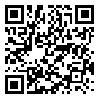BibTeX | RIS | EndNote | Medlars | ProCite | Reference Manager | RefWorks
Send citation to:
URL: http://rjms.iums.ac.ir/article-1-2723-en.html
Background: Exercise-Induced Bronchoconstriction (EIB) is a common problem in athletes that could affect their health and performance.The purpose of this study was to examine the effect of omega-3 supplementation on pulmonary function in female athletes after a single bout of exhaustive exercise.
Methods: Twenty two female athletes with mean±SD age 21.2±0.78 years, body mass of 21.2±2.32, and VO2max of 40.5±4.97 participated in a randomized, double-blind crossover study. Subjects entered the study on their normal diet, and then received either fish oil capsules containing 3.2 g eicosapentaenoic acid and 2.2 g docosahexaenoic acid (n-3 polyunsaturated fatty acid [PUFA] diet; n=11) or placebo capsules containing olive oil (placebo diet; n=11) taken daily for 3 weeks. The pulmonary variables were measured at baseline and at the end of the 3rd week. Data were analyzed by two-way ANOVA. When appropriate, further differences were analyzed by Bonferroni post hoc test. Statistical differences were considered significant at P<0.05.
Results: Results indicated that consuming omega-3 during 3 weeks of training had significant positive effect on pulmonary variables such as FEV1, FVC, and PEF (p<0.05).
Conclusion: The results of the present study suggest that consuming omega-3 can improve pulmonary function of the athletes.I It also has a significant protective effect in suppressing EIB in athletes because of reduction in FEV1 decreasing rate after exercise.





